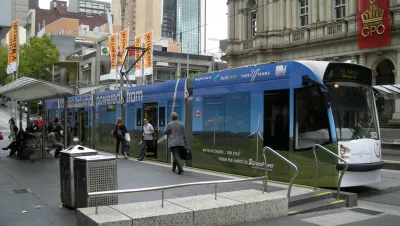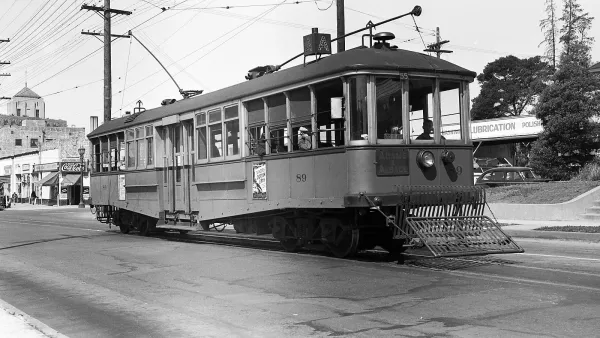A Toronto professor pushes against Christian Wolmar's assertion that the tram's demise can be connected to anti-worker policy. For one thing, trams never went away in some cities.

The history behind the gutting of public transit during the 20th century has been hotly debated. In a recent piece for The Guardian, Christian Wolmar argues that class snobbery contributed to anti-transit policy, with the middling classes preferring the more stately private automobile. Thomas R. Klassen doesn't entirely agree. "[Wolmar] argues that trams were eliminated 'because they catered for the working classes.' But surely that is too simplistic."
Klassen notes that cars quickly became working class transport. "As important in explaining public transit policies is that employment and residence patterns altered dramatically after the second world war. Moreover car ownership – for a while – became the nearly realised dream of many working-class households. In the 1950s and 60s it really did seem that public transportation, with the exceptions of subways and inter-city trains, largely would fade away."
In places like Toronto and Melbourne, trams survived the trend away from transit. "Toronto's trams have survived and prospered for two reasons. The first is that public-transit policymaking in Toronto was, and continues to be, so muddled and slow that politicians never got around to eliminating streetcars." The other, Klassen suggests, is simple good branding.
It's also important to remember that in places with a rising middle class, notably China, people prize both transit and car ownership. Driving has more cachet, but we have yet to see any of North America's historical transit-phobia.
FULL STORY: Thriving tram networks in Toronto and Melbourne

National Parks Layoffs Will Cause Communities to Lose Billions
Thousands of essential park workers were laid off this week, just before the busy spring break season.

Retro-silient?: America’s First “Eco-burb,” The Woodlands Turns 50
A master-planned community north of Houston offers lessons on green infrastructure and resilient design, but falls short of its founder’s lofty affordability and walkability goals.

Delivering for America Plan Will Downgrade Mail Service in at Least 49.5 Percent of Zip Codes
Republican and Democrat lawmakers criticize the plan for its disproportionate negative impact on rural communities.

Test News Post 1
This is a summary

Test News Headline 46
Test for the image on the front page.

Balancing Bombs and Butterflies: How the National Guard Protects a Rare Species
The National Guard at Fort Indiantown Gap uses GIS technology and land management strategies to balance military training with conservation efforts, ensuring the survival of the rare eastern regal fritillary butterfly.
Urban Design for Planners 1: Software Tools
This six-course series explores essential urban design concepts using open source software and equips planners with the tools they need to participate fully in the urban design process.
Planning for Universal Design
Learn the tools for implementing Universal Design in planning regulations.
EMC Planning Group, Inc.
Planetizen
Planetizen
Mpact (formerly Rail~Volution)
Great Falls Development Authority, Inc.
HUDs Office of Policy Development and Research
NYU Wagner Graduate School of Public Service




























